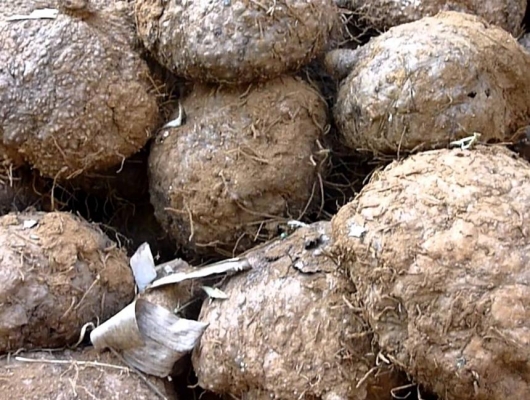General Information
It is a highly potential tropical tuber crop. In India, it has attained the status of a cash crop and the area under its cultivation is increasing fast. This crop also offers excellent export potential from India, since it is not generally cultivated commercially in other countries. The crop is gaining popularity due to its shade tolerance, easiness in cultivation, high productivity, less incidence of pests and diseases, steady demand and reasonably good price. It is rich source of carbohydrates, minerals and vitamin A, B. Andhra Pradesh, Bihar, Gujarat, Maharashtra and West Bengal are major yam growing states of India.







